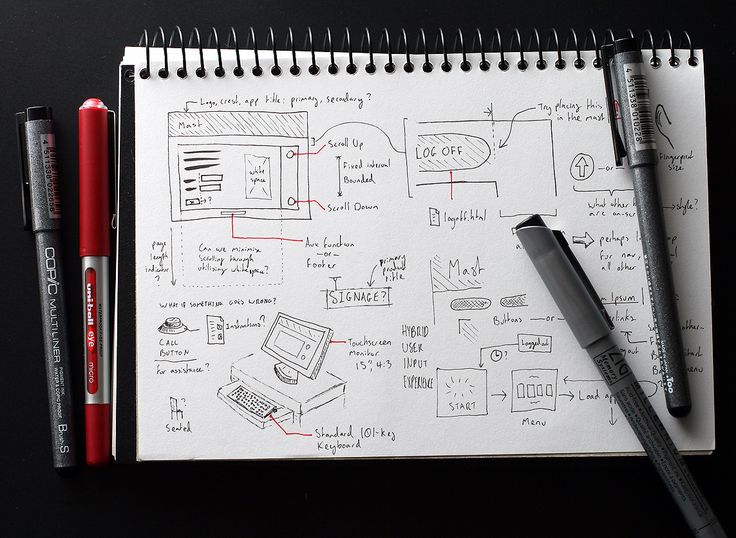Want to become a UX designer? Here are 3 proven resources to help you grow fast

Thanks to the efforts of a few accomplished design practitioners, and passionate design enthusiasts, the field of User Experience (UX) design is growing fast in Pakistan. Companies are realizing the incredible value derived from investing in UX, and are actively looking to hire talent to lead product development. This is part of a larger global trend, and our market is finally catching up.
I’ve been directly involved in hiring UX designers for KeepTruckin and Arbisoft, and I see a big gap in what companies want, and what potential employees can deliver. The vast majority of UX design applicants are UI designers or Graphic designers with poor understanding of the larger field of UX. This gap is an excellent opportunity for people to move into this hot field, and grow fast as a person and professional.
So, how do you grow fast, exactly?
Globally, design field is at a fork. There are two paths ahead, says influential designer and author Don Norman: design as a craft, and design as an evidence-based discipline.
In Pakistan and in many parts of the world, design is overwhelmingly taught as a craft. Universities like Indus Valley School in Karachi, National College of Arts and Beaconhouse National University in Lahore, and School of Art Design and Architecture in Islamabad will teach you visual / graphic / communication design, but they are yet to truly adapt to design as a process of solving problems. The latter is required to become a UX designer.
So, if you’re looking for a UX design education, you need to look elsewhere.
I believe there are five key types of resources you can tap into to educate yourself and become an employable UX Designer in a matter of months (of hard work). I used these resources myself to increase my knowledge UX design theory, and to increase the impact of my practical UX design work:
- Multi-course online design specializations
- Design communities and conferences
- Influential books and blogs
Let’s delve into each of them one by one.
#1 Multi-course online design specializations
Studying design in a virtual academic environment is the fastest way to kickstart your understanding of UX design. The benefits are two-fold:
- You learn design directly from the best professors in the world. These are designers who usually have 10-15+ years of work experience, so they know the field inside out. There’s no match to this exposure in Pakistan.
- By completing assignments, and capstone projects, you prepare a portfolio that’ll get you that coveted first break.
Both Coursera and edX offer multi-course specializations in Interaction Design. I benefited greatly from UC San Diego’s 8-course Interaction Design specialization, and have heard great things about University of Michigan’s 9-course UX Research and Design “micromasters” program. If you can manage it, CalArts’ 5-course Graphic Design specialization serves as a powerful augmentation. These are paid specializations, but financial aid is available to those who need it.
#2 Design communities and conferences
Online courses are great for learning, but they lack many of the qualities that make classroom education so powerful. Theoretical knowledge will only take you so far. You need to talk to like-minded design students, find and work with mentors, build a network, and collaborate on diverse real-world projects — TV, desktop, mobile devices and everything in between.
For all these purposes, there are a handful of active on-ground and online design communities:
- National Digital Design Conference (ND2C) is an upcoming large-scale design conference where renowned global and national designers like Stefan Sagmeister, Debbie Milman, Aneeqa Ishaq, Shehzil Malik, Saba Zaidi and more will be delivering talks, and conducting workshops. It’s an amazing opportunity to meet, connect, learn and potentially collaborate with the best designers from all over the world. The conference is scheduled for September 23-24, and I am super excited about it.
- UX Design in Pakistan is a 2,000+ member Facebook group of designers associated with organizations like Stanford, Google, KeepTruckin, SAP, Wells Fargo, Telenor, frog design, IDEO, IDEATE and more. Practitioners and enthusiasts alike share their favorite resources, have fun debates and discover collaboration opportunities — all with an aim to promote user experience design in Pakistan. I started this group last year, and it is now the biggest and most active community of its kind in the country!
- UXPakistan was the first UX design conference in Pakistan. It was successfully held at LUMS earlier this year with a powerful speaker lineup including Ali Murtaza, Imran Hussain, Gulraiz Khan and Shehzil Malik (she’s really great!). I attended it and shared my memorable experience. They’ll be organizing a bigger conference next year, so stay tuned.
#3 Books and blogs
You can get a great entry-level job in UX design by just making use of the first two kinds of resources, but to keep growing you will need to complement your learning by reading influential design books, and following leading design blogs. Absorbing this content that will diversify your thinking by exposing you to the history of design, useful design practices, principles and processes, current trends, while preparing you for the future of design.
I believe there is a five book starter pack of books that you need to read first. These are books that will rework your mind, and you will inevitably be led to other great design resources as you grasp everything they have to say.
- The Design of Everyday Things by Don Norman
- Don’t Make Me Think by Steve Krug
- The Inmates Are Running The Asylum by Alan Cooper
- Universal Principles of Design by William Lidwell
- 100 Things Every Designer Needs To Know About People by Susan Weinschenk
Some of these books are available for a reasonable price in online Pakistani bookstores like Fabingo, and Readings.
Books require more dedication than blogs, as you have to carve out a regular, sizeable chunks of time from your busy life. This is difficult, especially for those of us who aren’t used to reading books, but it is worth it.
For more bite-sized knowledge chunks you can throw in during breaks, you’ll do well by subscribing to the following blogs after going through their archive:
- Nielsen Norman Group Articles
- UXMatters
- The Year of the Looking Glass
- LukeW’s Writings
- UX Design Weekly
I’ve studied all courses, attended all conferences and read all books and blogs— now what do I do?
Wow. You’re already ahead of me! Assuming you’ve built a solid base of UX knowledge, you must work on real-world projects to bolster your portfolio. The key to getting a great UX design job is your portfolio*. This can be a simple folder, a presentation, or a complete website. In any case, you need to showcase your understanding of UX design through case studies that tell them about your design process: how you process design problems, how you conduct user research, how you ideate solutions and iterate on them in increasing fidelity through user testing.
Awais Imran is the co-founder of PriceOye! and curator of UX Design in Pakistan.
Growth Engineer @Jumpshare by day, Internet entrepreneur by night. Interested in UX design, and public speaking. Always on the lookout for exciting challenges!
Related Posts
PMDC to Decide Fee Structure for Private Medical and Dental Colleges
ISLAMABAD: The Pakistan Medical and Dental Council (PMDC) is set to deliberate on the standardization of tuition fees for private medical and dental colleges…
HEC Releases Updated Curricula for Sociology Degree Programs
ISLAMABAD: The Higher Education Commission (HEC) of Pakistan has introduced revised curricula for Associate, Bachelor’s, and Master’s degree programs in Sociology, setting new academic…














